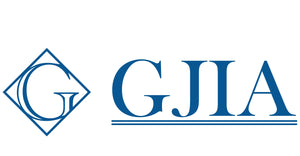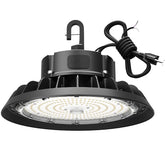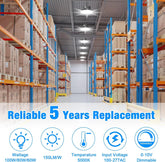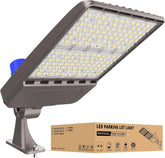Lighting requirements for led loading docks?
Lighting Requirements for Warehouse Aisles: Ensuring Safety and Efficiency in U.S. Facilities
Warehouse aisles are the backbone of storage and distribution operations, where workers, forklifts, and inventory converge daily. Proper aisle lighting is critical not only for productivity but also for compliance with U.S. safety regulations and reducing workplace incidents. This article explores the standards, design strategies, and technologies necessary to optimize warehouse aisle lighting while adhering to federal and industry guidelines.
1. Regulatory and Industry Standards for Aisle Lighting
a. OSHA Requirements
The Occupational Safety and Health Administration (OSHA) sets baseline standards under 29 CFR 1910.178(m)(9) for powered industrial truck operations, emphasizing adequate lighting to prevent collisions and injuries. Key requirements include:
- Minimum 10 lux (1 foot-candle) for general aisle navigation.
- Minimum 50 lux (5 foot-candles) in areas where workers handle inventory, operate equipment, or read labels.
- Elimination of glare, shadows, and flickering lights that could impair visibility.
b. IES Recommendations
The Illuminating Engineering Society’s ANSI/IES RP-3-20 guidelines provide granular advice for warehouse lighting:
- Horizontal Illuminance: 50–100 lux (5–10 foot-candles) for narrow aisles (<10 ft wide).
- Vertical Illuminance: 200 lux (20 foot-candles) for high-storage racks to ensure labels and barcodes are legible.
- Uniformity Ratio: A maximum 3:1 ratio between the brightest and darkest zones to reduce eye strain.
c. Energy Code Compliance
Aligning with ASHRAE 90.1 or IECC ensures energy-efficient designs. For example, LED fixtures with occupancy sensors can meet power density limits (e.g., 0.6 watts per square foot) while minimizing costs.
2. Key Design Considerations for Aisle Lighting
a. Fixture Placement and Height
-
Low-Bay vs. High-Bay Lighting:
- Low-Bay LEDs (≤15 ft ceiling height): Ideal for narrow aisles, providing focused downward light with minimal spillage.
- High-Bay LEDs (>15 ft): Suited for wide aisles or high-storage facilities, offering broad coverage and high lumen output (e.g., 20,000–40,000 lumens).
- Linear Lighting: Suspended or rack-mounted linear LED strips enhance uniformity in long aisles.
b. Task-Specific Illumination
- Picking and Packing Zones: Increase lighting to 75–100 lux (7–10 foot-candles) for accuracy in order fulfillment.
- Cross-Aisles and Intersections: Use brighter lighting (≥50 lux) and reflective floor markers to highlight traffic flow.
c. Glare Control and Color Quality
- Optics: Diffused lenses or louvered fixtures reduce glare from overhead lights.
- Color Temperature: 4000K–5000K LEDs balance warmth and clarity, aiding in color recognition (e.g., identifying hazard labels).
- CRI ≥85: High color rendering index ensures labels, safety signs, and inventory are distinguishable.

3. Safety and Operational Enhancements
a. Emergency and Backup Lighting
Per NFPA 101 Life Safety Code, warehouses must install emergency lighting along aisles and exits to maintain 1 foot-candle for 90 minutes during power failures. Options include:
- Battery-integrated LED fixtures.
- Centralized inverter systems with automatic switching.
b. Pedestrian-Forklift Separation
- Aisle Markers: Use floor-mounted LED tape or low-level bollard lights to delineate pedestrian walkways.
- Motion-Activated Warning Lights: Install red/blue LED strobes at intersections to alert forklift operators of approaching workers.
c. Hazardous Material Storage
Aisles storing flammable goods must comply with NEC Article 500, requiring explosion-proof fixtures rated for Class I/Division 2 or Class II/Division 2 environments.
4. Energy Efficiency Strategies
a. Smart Lighting Controls
- Occupancy Sensors: Save energy by dimming lights in unoccupied aisles.
- Daylight Harvesting: Integrate photocells to adjust artificial lighting based on natural light levels from skylights or windows.
b. Rebates and Incentives
- Utility Programs: Many states offer rebates for upgrading to DLC-certified LEDs.
- Federal Tax Benefits: Section 179D provides deductions for energy-efficient warehouse lighting systems.
c. Maintenance Best Practices
- Predictive Monitoring: Use IoT-enabled lighting systems to track fixture performance and schedule timely repairs.
- Group Relamping: Replace all aisle lights simultaneously to maintain consistent illuminance.
5. Case Study: Streamlining a Texas Distribution Center
A Dallas-based logistics hub retrofitted its 12-foot-wide aisles with suspended linear LEDs (3000K, 80 CRI) and occupancy sensors. The upgrade improved illuminance from 5 to 15 foot-candles, reduced energy costs by 55%, and decreased mispick errors by 30% within a year.
6. Common Mistakes to Avoid
- Inadequate Vertical Lighting: Poorly lit rack faces lead to labeling errors and delayed operations.
- Overlooking Shadow Zones: Ensure lighting accounts for obstructions like pallets or machinery.
- Ignoring Local Codes: Some states (e.g., California Title 24) have stricter energy rules than federal standards.
Conclusion: Lighting as a Catalyst for Warehouse Performance
Optimizing warehouse aisle lighting requires balancing regulatory compliance, worker safety, and energy efficiency. By adopting high-quality LEDs, smart controls, and task-specific designs, facilities can minimize risks, enhance accuracy, and achieve long-term cost savings. Regular audits, employee training, and partnerships with lighting experts ensure systems adapt to evolving operational needs and technological advancements.
For a tailored lighting assessment, consult a certified professional or explore resources at the National Lighting Bureau (NLB).
Word Count: 750
Audience: Warehouse managers, supply chain coordinators, safety officers, and facility operators.
Key Terms: OSHA 29 CFR 1910.178, NEC Article 500, lumen output, daylight harvesting, NFPA 101.








